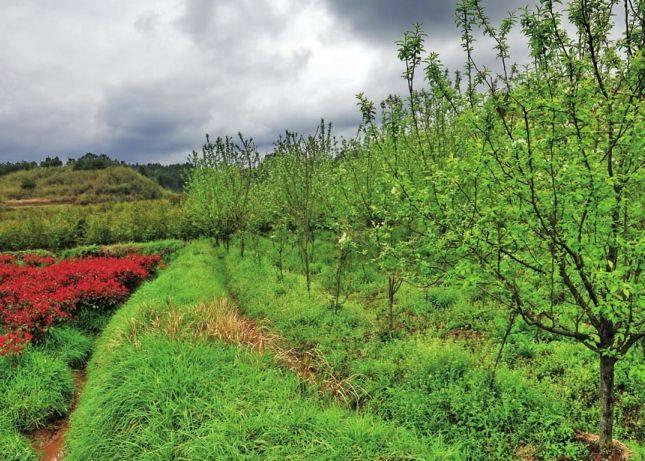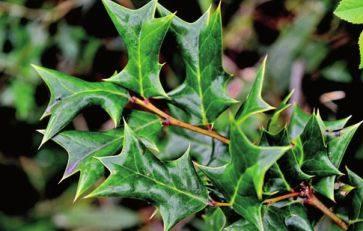Chen Guanghui,Pioneer of Sustainable Agriculture


SWALLOWS flit over the paddy field where frogs croak and loaches dart – a traditional Southern Chinese rural scenario that Chen Guanghui is doing his best to restore. “The setting is, in fact, of ecological significance, as swallows, frogs and loaches protect the rice by eating pests,” Chen said. “But our dependence on pesticide has destroyed this ecological balance.”
Chen Guanghui is chairman of the Xinlincao Farmers Cooperative in Xiuning County, Anhui Province. He first understood the gravity of the pesticide issue in 1998, the year the EU increased its regulation of the permitted amount of chemicals left in farm products. This resulted in a steep plummet in Chinese tea exports. To the 200,000 tea farmers in Xiuning County this was tantamount to a death sentence.
Chens extensive experience in tea processing and inspection made clear to him that a change from the pesticide-dependent mode of planting was the only solution to the pesticide residue issue. Pesticides and fertilizers helped farmers achieve high production, but they now faced the bitter consequences of overuse, evident in soil compaction, biodiversity reduction, pollution, and imperiled food security. That the writing was on the wall for pesticide and fertilizer-fueled agriculture was generally acknowledged, but no one could come up with an alternative.
Tridimensional Tea Gardens
In 2004, after six years of cogitation and consideration, Chen Guanghui, then in his late 30s, drew out all of his tea trade savings to try his hand at organic agriculture. He hired workers to plant rape and later rice on a stretch of rented farmland, but neither flourished. Owing to the long investment cycle and relentless natural disasters, all his investment partners withdrew from the project.
Chens spirits were at a low ebb during the early years of his new venture. As he said, “I didnt know where to start.”He would often gaze at the mountains, originally covered with lush vegetation, that farmers had cleared to plant tea-oil camellia in efforts to increase income. But this economic crop fell prey to diseases and pests, and the land soon became overgrown with weeds.
Chen Guanghui reasoned that abandoning pesticides necessitated incorporating different plants, animals and microorganisms into the building of a three-dimensional agricultural system and utilizing their characteristics. He was also aware of the need to select plant varieties that farmers would be keen to cultivate due to their economic benefits.
Chens experimental tea garden is the embodiment of this idea. He planted tall papaya trees between waisthigh tea trees, and encircled the field with osmanthus trees. The land is now ankle-deep in grasses and hedged with hibiscus.
“Every plant you see here is useful,”Chen said. The tall papaya and sweetscented osmanthus trees give shade to the tea trees and heighten the aroma of their leaves. The grasses include insectkilling pyrethrum and also clover, which enhances soil fertility. In summer the blooming white hibiscus flowers attract bees – natural enemy of pests that harm tea trees.
Whats more, all plants have high economic value. The papaya trees, for example, can produce as much as 800 kg of fruits per mu (one sixth of an acre). These are raw material for papaya vinegar and juice, which generate an income several times that of the tea trees. Sweetscented osmanthus can be processed into wine and oil, while pyrethrum is the main component of mosquito coils, and dried hibiscus flowers are popular market items in Italy and Spain.
In 2009, Chen initiated the Xinlincao Farmers Cooperative, so helping 5,000 farming households transform more than 12,000 mu of tea gardens. After providing farmers with six million free saplings he then showed them how to plant and nurture the trees. This innovation enabled land to be used for eight months of the year as compared to the previous three to four months. Although the new approach entailed doubling the working hours, it substantially reduced expenditure on pesticides, irrigation and fertilizer. The total per mu income consequently rocketed from RMB 1,580 to RMB 11,960. These transformed tea gardens moreover save 10,000 tons of water, absorb 36,000 tons of carbon dioxide and release 26,000 tons of oxygen every year.
Farmers provided their fields and labor while the cooperative furnished them with saplings and technologies and purchased their flowers and fruits after the harvest. This cooperation enabled farmers to adopt new technologies, and Chens practice was soon promoted throughout Xiuning County. Many farmers were at first doubtful about planting trees and grass in their tea gardens, but joined the cooperative within two years after witnessing the growth in income of those that already had, and the popular- ity on the market of the fruits they had produced.
Build an Eco-village
In 2012, Chen Guanghui rented a 1,000-mu field in Shangyan Village specifically to cultivate tea tree saplings. His eventual expectation was to transform Xiuning Countys 200,000 mu of tea gardens. Of the villages 1,500 population, most adult men were working away in cities, leaving women and elderly to do the farming. Planting rice and rape would normally bring them a paltry net income of around RMB 1,000 a year.
This situation saddened Chen. “Village elders would labor in the paddy fields, but the rice they produced that was surplus to their own needs could only earn them a few hundred yuan. Raising hogs and chickens was not financially feasible, so the most they could hope for was not to make a loss.”
The village includes both mountains and arable land, but the low land ratio meant poor productivity. Chen decided to use his idea of a three-dimensional tea garden to transform Shangyan into a sustainable village. He could see that the waste products, such as twigs and leaves, of planting rice, rape and tea could be used to cultivate edible fungus. Also that papaya fruit windfalls could be used to feed pigs, whose manure could fertilize the soil, produce biogas and, after fermentation, even raise earthworms.
The absence of able-bodied laborers in the village made aquaculture, orchards and poultry farms more appropriate business ventures. Chen encouraged villagers to plant economic trees like mulberry, medlar and persimmon, because their leaves could be used as cattle feed and their fruits sold as raw materials. Planting grass in open areas around the house also enabled farmers to raise geese and ducks, whose dung could feed the fish in nearby ponds. “A rational arrangement enables the waste products of each food chain to be utilized by the next,”Chen said. “This reduces costs, increases income and also solves the problem of waste in the countryside.”
Farmers would undoubtedly return to the countryside if their land could double, or even triple, their incomes by giving full play to its potential. “We should make farm workers out of farmers and change villages to rural industries,” Chen said. “People would then not flock to cities, which would ameliorate urban problems such as unemployment, traffic congestion and environmental damage. Meanwhile, children and the elderly would not be left alone in the countryside.”
Develop Tree-grass Economy
In June 2012, Chen Guanghui, on the recommendation of the National Development and Reform Commission, represented China at the Rio+20 UN Conference on Sustainable Development. He introduced his innovative sustainable agriculture project, but meanwhile began to review his practice from a broader viewpoint.
China has only 1.8 billion mu of farmland. This, along with various ecological problems, makes guaranteeing future food security difficult. But China also has five billion mu of mountains and three billion mu of grassland. Appropriate exploitation of mountain vegetation and grassland would make it possible to turn them into production bases for fruits and vegetables, as well as for bio-energy resources and animal husbandry. “This would greatly ease pressure on farmland and also curb over-exploitation of underground water, desertification of arable land and environmental deterioration,” Chen said.
When deciding upon suitable plants, Chen took animals, the environment and people into consideration. For instance, he raised goats in fields planted with evergreen shrubs, notably photinia serrulata, which they particularly relish. He thus significantly reduced feed costs, and selling both the goats and the trees also earned him a handsome profit.
Chen has planted more than 400 species in his experimental plot, about half of which have not survived. To pinpoint Northern Chinas evergreen trees, he made frequent visits to Beijings Botanical Garden each winter to photograph plants that remained green, do research on and plant each one. He eventually found that the cephalotaxus sinensis is both sand- and wind-resistant, and has since planted these trees on a farm in Beijings Miyun County.
A friend of Chens gave him a calligraphic scroll bearing the legend, The Glory of Grass and Trees, by which he meant that each tree and blade of grass plays its part in natures grand scheme. Chen treasures this scroll because it endorses his belief that were humans to follow the intrinsic laws of nature and respect all life, the ecology would harmonize and the world would be a better place.

